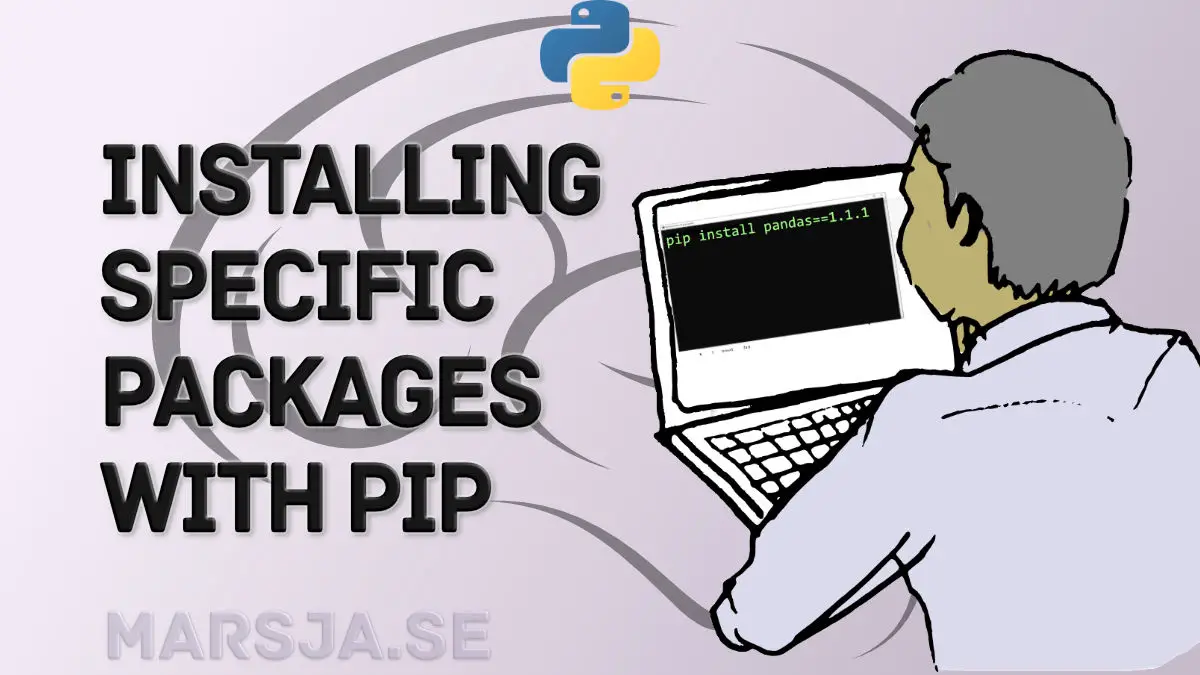Pip Package Version Check: A Quick Guide

In the world of Python development, effective package management is crucial for maintaining a stable and up-to-date project environment. The pip package installer, a standard tool in the Python ecosystem, plays a pivotal role in this process. This article aims to provide a comprehensive guide on checking package versions using pip, a critical task for developers to ensure compatibility and avoid potential issues.
Understanding pip and Package Management

Python’s pip (Python Package Index) is a command-line tool that simplifies the installation, upgrade, and removal of Python packages. It manages the dependencies and versions of these packages, ensuring that projects can function with the required software components. Proper version control is essential to avoid conflicts and maintain project integrity.
For instance, consider a project that relies on the numpy package for numerical computations. Without proper version management, updating numpy could inadvertently break the project if a new version introduces incompatible changes. By actively checking and managing package versions, developers can prevent such scenarios and ensure smooth project operations.
The Importance of Version Checking

Version checking is a fundamental practice in software development. It helps developers:
- Ensure Compatibility: Different packages may have specific version requirements to work together seamlessly. Checking versions ensures that the right combination is used.
- Avoid Breaking Changes: Major version updates often introduce significant changes. By verifying the versions, developers can prepare for and mitigate potential issues.
- Maintain Project Stability: Consistent version management keeps the project environment stable, reducing the risk of unexpected errors and crashes.
- Facilitate Collaboration: When working in teams, version control ensures that all team members are working with the same package versions, fostering efficient collaboration.
Checking Package Versions with pip
The pip command-line tool offers a straightforward way to check the versions of installed packages. Here’s a step-by-step guide:
Step 1: Open the Terminal
To begin, open the terminal or command prompt on your system. This provides the command-line interface needed to interact with pip.
Step 2: Navigate to the Project Directory
If you’re working on a specific project, navigate to its directory using the cd command. This ensures that the pip commands affect the desired project’s environment.
Step 3: List Installed Packages
Use the following command to list all installed packages along with their versions:
pip list
This command provides a comprehensive overview of the project's package environment, including the package name and version.
Step 4: Check a Specific Package’s Version
If you want to verify the version of a particular package, such as numpy, use the following command, replacing package_name with the desired package:
pip show package_name
This command provides detailed information about the specified package, including its version, location, and other metadata.
Step 5: Verify Package Updates
To check for available updates for a package, use the pip check command. This command identifies any compatibility issues and suggests updates if needed:
pip check
By regularly running this command, developers can stay informed about potential package conflicts and take proactive measures to maintain project health.
Best Practices for Version Control
While pip provides a basic version-checking mechanism, developers can enhance their version control practices by:
- Using Virtual Environments: Create isolated environments for each project to avoid version conflicts between projects.
- Documenting Package Versions: Maintain a record of package versions used in the project to facilitate future references and troubleshooting.
- Automated Testing: Implement automated tests that verify the functionality of the project with specific package versions.
- Regular Updates: Schedule periodic checks for package updates and plan upgrades to maintain security and stability.
Conclusion: A Proactive Approach to Package Management

In the dynamic world of Python development, effective package management is a cornerstone of successful projects. By following the outlined steps and best practices, developers can proactively manage package versions, ensuring compatibility, stability, and a seamless development experience.
Remember, proper version control is not just a technical task but a strategic approach to building robust and reliable Python applications.
What is the recommended frequency for checking package versions?
+It’s recommended to check package versions regularly, especially before starting a new development sprint or when integrating new features. Weekly checks can provide a good balance between staying updated and avoiding excessive overhead.
Can I automate the version-checking process?
+Absolutely! You can use tools like pip-tools or integrate version-checking scripts into your continuous integration/continuous deployment (CI/CD) pipeline. This ensures that package versions are consistently monitored and updated as needed.
How do I handle package conflicts when updating versions?
+When updating package versions, conflicts may arise due to incompatible dependencies. It’s crucial to carefully review the pip output and research the changes introduced by the new package version. Sometimes, updating one package may require updating others as well to maintain compatibility.



